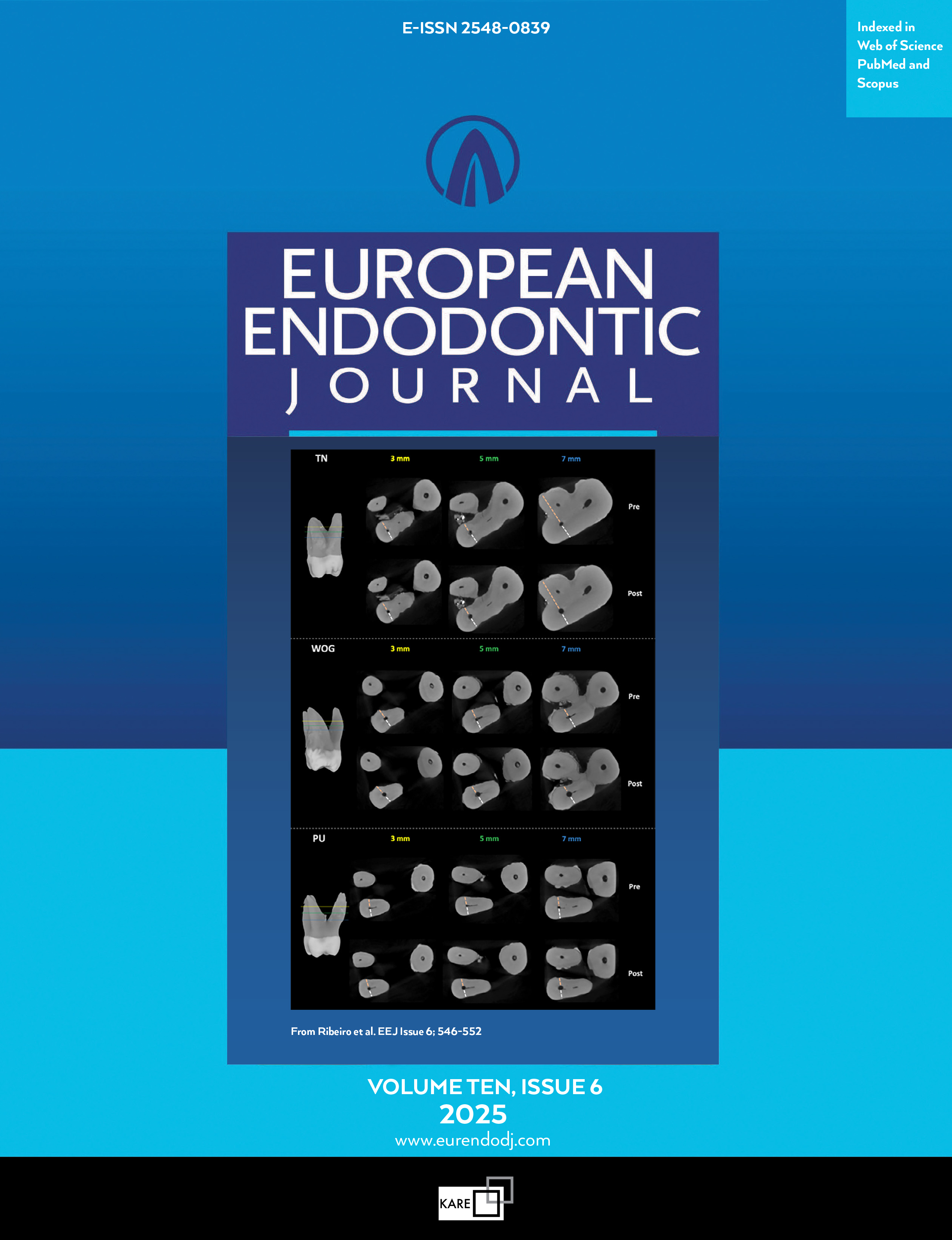Metrics
2024 IMPACT FACTOR
5 year Impact Factor
Eigenfactor Score
2024 CiteScore
Journal Citation Reports
(Clarivate 2025, JIF Rank)
Outcomes of Direct Pulp Capping After Carious Excavation of Deep Caries on Permanent Mature Teeth: An Ancillary Study Derived From A Randomised Clinical Trial
Marjorie Zanini1, Giuseppe Balice2, Olivia Kérourédan3, Charlotte Lézé4, Francois Gueyffier2, Delphine Maucort-Boulch2, Patrice Nony2, Brigitte Grosgogeat5, Nelly Pradalle61Department of Restorative Dentistry and Endodontics, Paris Cité University, Faculty of Dentistry, Paris, France; UMR Oral Health Laboratory 1333, Montrouge, France; Department of Oral and Dental Medicine, Pitié Salpêtrière Hospital, Paris, France2Laboratory of Biometrics and Evolutionary Biology UMR 5558, University of Lyon, University of Lyon 1, CNRS, Laboratory of Biometrics and Evolutionary Biology UMR 5558, Villeurbanne, France; Department of Biostatistics, Hospices Civils de Lyon, Lyon, France
3University of Bordeaux, INSERM, BioTis, U1026, Bordeaux, France; Department of Restorative Dentistry and Endodontics, University of Bordeaux, Faculty of Dental Sciences, Bordeaux, France; Bordeaux University Hospital, Centre for Oral Medicine and Surgery, Bordeaux, France
4Department of Restorative Dentistry and Endodontics, Paris Cité University, Faculty of Dentistry, Paris, France; Department of Dental, Rothschild Hospital, Paris, France
5Faculty of Dentistry, Claude Bernard University, Lyon 1, Lyon, France; Multimaterial and Interfaces Laboratory (UMR CNRS 5615), Villeurbanne, France; Medical Dentistry Centre, Hospices Civils de Lyon, Lyon, France
6Department of Restorative Dentistry and Endodontics, Paris Cité University, Faculty of Dentistry, Paris, France; Department of Dental, Rothschild Hospital, Paris, France; Multimaterial and Interfaces Laboratory (UMR CNRS 5615), Villeurbanne, France
Objective: To evaluate the clinical efficacy of direct pulp capping (DPC) using Biodentine, a calcium silicate-based cement, in cases of carious pulp exposure, focusing on pulp survival and treatment success.
Methods: This study retrospectively included all patients with pulp exposure who participated in the randomised clinical trial. Follow-up was performed at 1, 2 and 3 years after treatment. The primary outcome was pulp survival. The secondary outcomes were patient satisfaction, marginal integrity of the restoration, and overall survival (defined as both pulp survival and marginal integrity success combined). To account for censoring, pulp survival, marginal integrity success, and overall survival were analysed using the actuarial survival methods.
Results: Of the 36 patients included, the pulp survival, marginal integrity success, and overall survival rates at one year (95% confidence interval (CI)) were 0.912 (0.816-1.000), 0.971 (0.914-1.000) and, 0.882 (0.774-0.991), respectively. At two years, the conditional pulp survival and overall survival rates were both 0.926 (0.827-1.000) and the marginal integrity rate was 1 (1-1). After three years, the conditional pulp survival rate, marginal integrity rate and overall survival rate were 0.953 (0.864-1.000), 0.907 (0.784-1.000) and 0.86 (0.714-1.000), respectively. From the patients view, the restorations were considered clinically satisfactory, with only one patient expressing concerns after two years.
Conclusions: Despite the potential for attrition bias, our results are promising and consistent with the existing literature. This study supports DPC as a reliable therapeutic approach for managing pulp exposure following carious excavation.(EEJ-2025-01-015)
Keywords: Calcium silicate, deep caries, direct pulp capping, exposed pulp, permanent teeth, vital pulp treatment
Manuscript Language: English
(229 downloaded)



